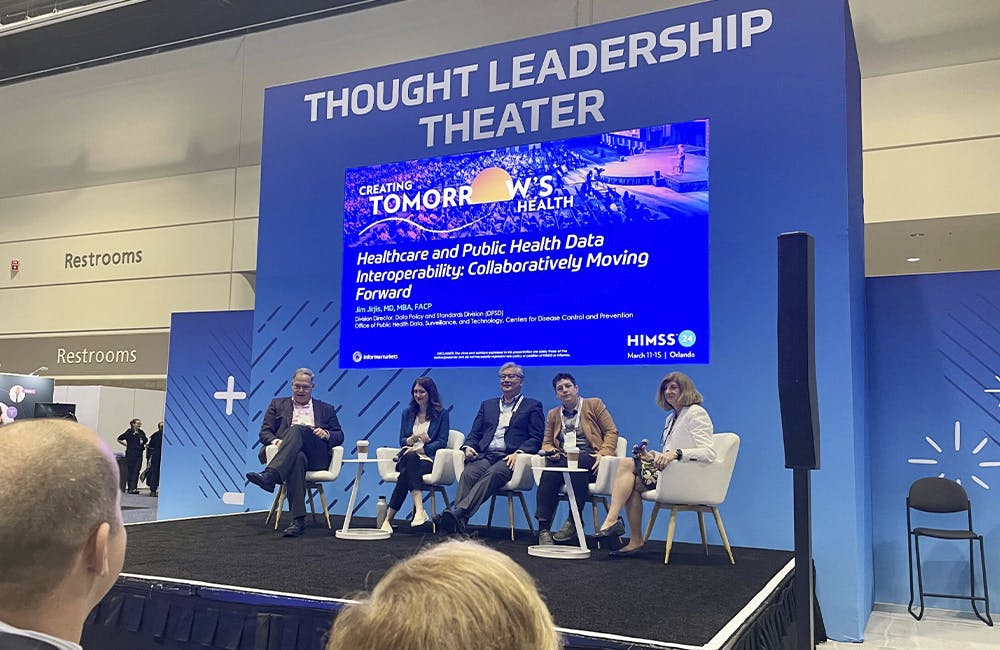VA Resets Multibillion Dollar EHR Rollout
The agency is halting future deployments of Oracle Cerner’s EHR to focus on fixing the system.

The Department of Veterans Affairs announced a “reset” of its electronic health record modernization program Friday, and is stopping all future rollouts of the Oracle Cerner system to fix issues at the five sites that currently use the new EHR.
“We’ve heard from veterans and VA clinicians that the new electronic health record is not meeting expectations – and we’re holding Oracle Cerner and ourselves accountable to get this right,” VA Secretary Denis McDonough said in a press release Friday. “This reset period will allow us to focus on fixing what’s wrong, listening to those we serve, and laying the foundation for a modern electronic health record that delivers for veterans and clinicians.”
The announcement follows VA’s “assess and address” period, during which the agency’s EHRM Sprint Project Team drafted a report on changes needed to mitigate existing issues with the new EHR.
The report focused on patient care by improving accuracy, enterprise standardization and reliability of data collected for uploading to the new system; bolstering management of clinical and administrative order; and enhancing standardization of EHR naming conventions to ease cognitive burden and better support VA’s enterprise scale.
“It’s clear that the new EHR is not meeting their expectations. Frankly, it’s not meeting my expectations either. That’s why we’re halting all work on future deployments while we prioritize improvements at the five sites,” Dr. Neil Evans, acting program executive director for the Electronic Health Record Modernization Integration Office (EHRM-IO), told reporters during a media briefing. “During this program reset, we’ll be fixing issues with EHR including many of the issues that were identified during our recent ‘assess and address’ period.”
By stopping future rollouts, Evans said VA will be able to focus directly on the improvement of the EHR itself and the system’s fit for VA, honing in on reliability, performance and system configuration. VA will not be scheduling further deployments, with the exception of the James A Lovell Federal Health Care Center in North Chicago until the EHR is functioning at the current sites.
“We’ll demonstrate this readiness by measurable improvements in both clinician and veteran experience, reliability and technical perspective of the system, improved productivity at the sites where the EHR is be used and more. When those criteria are met, and the reset period concludes, at that point time we’ll release a new deployment schedule and resume deployment activities,” Evans said. “Turning our focus toward our existing sites and toward the preparation to move forward is the key point of what we’re going to be accomplishing during this reset. … We’re not creating a false urgency of a schedule that says we’ve got to restart on X date.”
Contract negotiations with Oracle Cerner are ongoing in an effort to hold the vendor accountable for delivering a high-functioning, high-reliability EHR system. As part of the reset, VA will work with Congress on resource requirements, and the agency estimates fiscal year 2023 costs will be reduced by $400 million.
“Are we married to any given provider? No, we need to deliver the best experience, and VA understands that. Is there value in continuing to move forward to delivering a federal EHR between the Department of Defense and the VA that that will improve interoperability with the private sector, improve the ability to ingest information into veterans’ records that will allow us to build a longitudinal record for veterans that begins with the day they enlist through their entire time at VA? We still believe there is and are still working in that direction,” Evans said.
During the reset, the remaining sites that have yet to move to the Oracle Cerner system will rely on VA’s legacy system Veterans Health Information Systems and Technology Architecture (VistA) Computerized Patient Record System (CPRS) to deliver care.
“Transitioning from an electronic health record that allows for a little bit more local customization to an enterprise electronic health record that is delivered as a single instance across the entire VA, there are opportunities to work within VistA CPRS in working through some of how things are done in VistA CPRS that may ease some of the transition to the Oracle Cerner record moving forward. We will be doing work in both VistA CPRS and Oracle Cerner as part of the reset in order to drive our path forward to succeed with this project,” Evans told GovCIO Media & Research.
This is a carousel with manually rotating slides. Use Next and Previous buttons to navigate or jump to a slide with the slide dots
-

CDC Updates Public Health Data Strategy
Accelerating data sharing through capabilities like electronic case reporting make up a large portion of the new two-year plan.
3m read -

How VA is Using Digital Services to Expand Care to Veterans
CIO Kurt DelBene says the the agency’s 2024 priorities included AI adoption, hiring and a better user experience for veterans.
30m listen -

How AI, Digital Transformation in Health Care Compare Around the World
HHS and EU officials contrasted the different frameworks for emerging technology and the challenges that remain.
4m read -

Health Agencies Tout Standards in Data Sharing, Interoperability
Officials from CMS, ONC and HHS spoke about data standards and how to help smaller health organizations make modernization progress.
3m read








